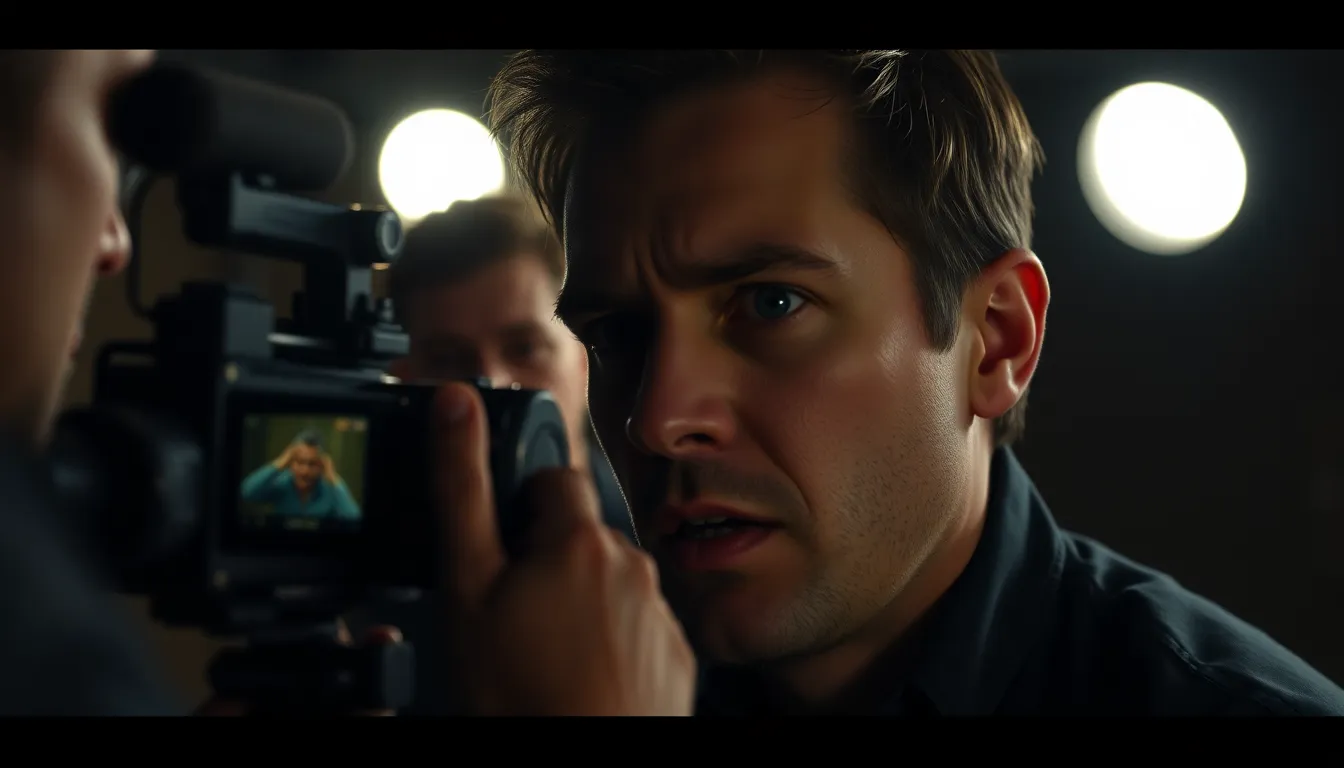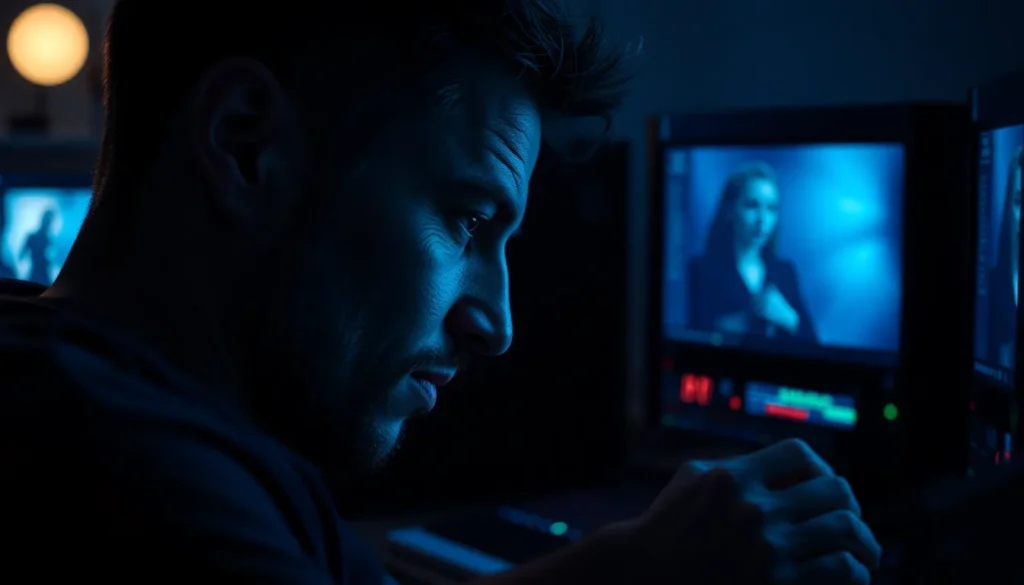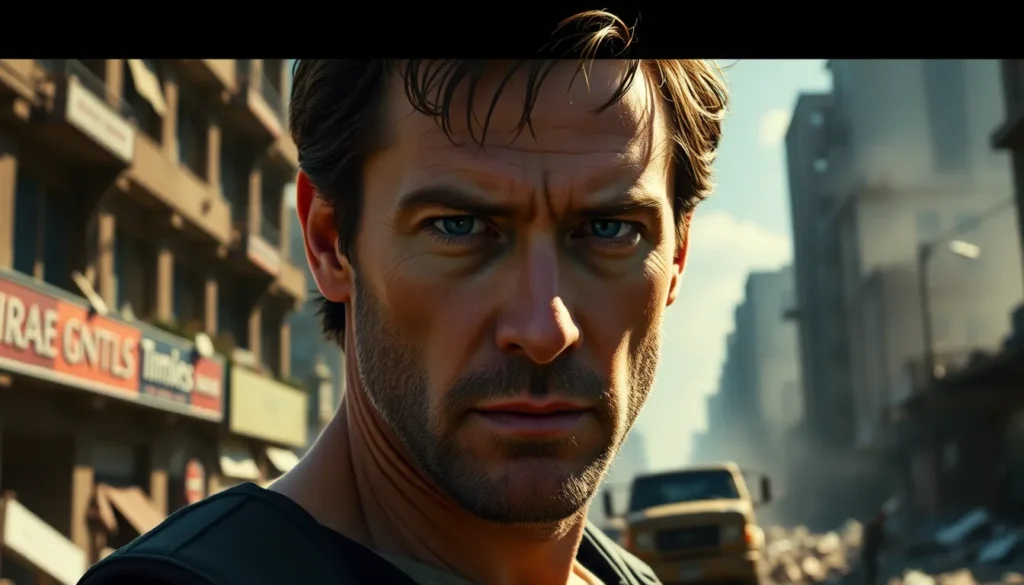Table of Contents
ToggleCinematic tension building is the secret sauce that keeps audiences on the edge of their seats, hearts racing, and popcorn forgotten. Ever wonder why some films leave you biting your nails while others make you yawn? It’s all about how filmmakers masterfully weave suspense into their storytelling.
Understanding Cinematic Tension Building
Cinematic tension building serves as a critical tool for filmmakers, enhancing audience engagement through sustained suspense. Mastery of this technique keeps viewers emotionally invested in storylines.
Definition and Importance
Cinematic tension building refers to the techniques used to create suspense within a film. Filmmakers evoke feelings of anxiety and anticipation, compelling viewers to stay alert. This method ensures that audiences remain focused on characters and plot developments. Effective tension increases emotional stakes, often leading to heightened audience reactions. Elements like pacing, music, and character dilemmas play pivotal roles in establishing tension. When executed well, these dynamics transform a simple narrative into a captivating experience.
Historical Context
Cinematic tension has evolved significantly across film history. Early cinema relied heavily on visual storytelling, where silent films used exaggerated expressions and physical actions. Classics like Alfred Hitchcock’s work during the mid-20th century introduced psychological tension, influencing modern narratives. The 1970s and 1980s saw filmmakers experiment with sound design and editing styles to heighten suspense. Recent technological advancements allow for innovative techniques such as non-linear storytelling, contributing to the complexity of cinematic tension. Overall, a rich history of tension-building techniques showcases their lasting impact on audience engagement and narrative structure.
Techniques for Building Tension

Filmmakers employ various techniques to create and amplify cinematic tension, enhancing audience engagement.
Cinematography and Framing
Cinematography significantly influences tension. Close-ups reveal character emotions and draw viewers into their inner turmoil. Wide shots, on the other hand, can emphasize isolation or danger. Angled shots create unease, as they disrupt the viewer’s expectations. Furthermore, lighting plays a critical role; shadows can obscure details, adding mystery and prompting anxiety. Intentional framing choices guide the viewer’s focus, highlighting crucial elements that heighten suspense. By employing these visual techniques, filmmakers craft an immersive experience that keeps audiences on edge.
Sound Design and Music
Sound design and music are essential for building tension. Ambient sounds can enhance the atmosphere, making scenes feel more real. A sudden silence often generates an anticipatory feeling, signaling imminent danger. Additionally, music cues guide emotional responses, with rising crescendos signaling moments of high tension. Dissonance in score can evoke discomfort, making viewers uneasy about what may happen next. Strategic sound placements create a dynamic experience, heightening curiosity and dread. These auditory elements work together to ensure that tension remains palpable throughout the film.
Narrative Structure
Narrative structure serves as a backbone for tension building. Authors often use pacing to manipulate time, controlling when tension peaks and resolves. Non-linear storytelling can confuse audiences, maintaining suspense and intrigue. Cliffhangers generate excitement, leaving viewers eager for answers. Character dilemmas often add stakes, forcing individuals into difficult moral choices that can lead to unpredictable outcomes. By weaving these narrative techniques into plots, filmmakers keep audiences invested and engaged, ultimately deepening the overall tension within the story.
Case Studies of Effective Tension Building
Examining films offers valuable insights into techniques for building tension effectively. Both classic and modern films showcase distinct methods that captivate audiences.
Classic Films
Alfred Hitchcock’s “Psycho” exemplifies classic suspense. The infamous shower scene employs strategic editing and a chilling score to heighten anxiety. Viewers are kept on edge through sudden cuts and evocative music. Additionally, “Suspicion” leverages character ambiguity to create uncertainty. Audiences question the protagonist’s trustworthiness, enhancing emotional investment. Another notable example is “Jaws,” where sound design plays a pivotal role. The iconic two-note theme signals impending danger, effectively escalating tension throughout the film.
Modern Films
In contemporary cinema, “Get Out” demonstrates adept tension building. The film combines unsettling visuals and sound to create a pervasive sense of dread. Unpredictable narrative twists keep viewers engaged, fostering an atmosphere of suspense. “A Quiet Place” relies on silence to amplify tension, forcing characters—and audiences—to remain hyper-aware. The use of minimal dialogue enhances the stakes. Similarly, “Hereditary” utilizes unsettling imagery and erratic pacing to evoke discomfort. Its slow-burning tension culminates in shocking moments, leaving a lasting impact on viewers.
Psychological Impact on the Audience
Cinematic tension significantly influences audience psychology, fostering deep emotional connections and heightened levels of suspense.
Emotional Engagement
Emotional engagement arises from effective tension-building techniques. Viewers experience anxiety, fear, or excitement, which increases investment in the narrative. Filmmakers craft scenarios that resonate with viewers’ fears and desires, often using relatable characters facing dire situations. This connection evokes empathy and compels the audience to care about the characters’ outcomes. For instance, a protagonist’s struggles often mirror viewers’ personal challenges. They invest emotionally, resulting in an unforgettable viewing experience. Thus, emotional engagement transforms passive spectators into active participants in the story’s journey.
Viewer Expectations
Viewer expectations play a crucial role in how tension impacts psychological perceptions. Audiences enter a film with preconceived notions based on genre conventions and prior experiences. Tension-building techniques can both meet and subvert these expectations, enhancing suspense. They anticipate predictable outcomes, yet when filmmakers introduce unexpected twists, viewers often experience shock or fear, intensifying engagement. Surprise elements create a sense of unpredictability, keeping audiences on the edge of their seats. By manipulating these expectations, filmmakers sustain interest throughout the film, ensuring that each moment contributes to a larger narrative arc.
Cinematic tension building remains a vital tool in the filmmaker’s arsenal. By skillfully manipulating elements like pacing, sound design, and character dilemmas, filmmakers create an immersive experience that captivates audiences. This art form not only enhances emotional engagement but also transforms viewers into active participants in the story.
As techniques evolve, the psychological impact of tension continues to resonate. Whether through classic masterpieces or modern thrillers, the ability to build suspense keeps audiences invested and eager for resolution. Ultimately, understanding these methods can deepen appreciation for the craft of filmmaking and its power to evoke strong emotional responses.







